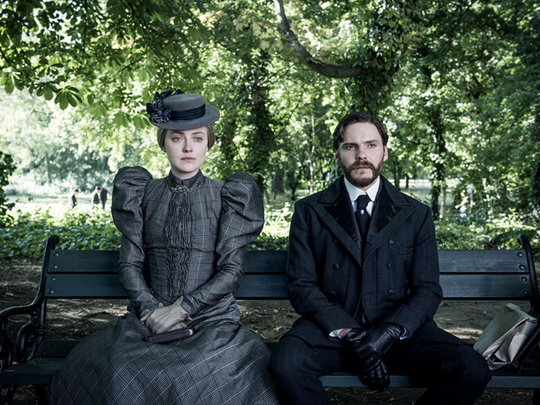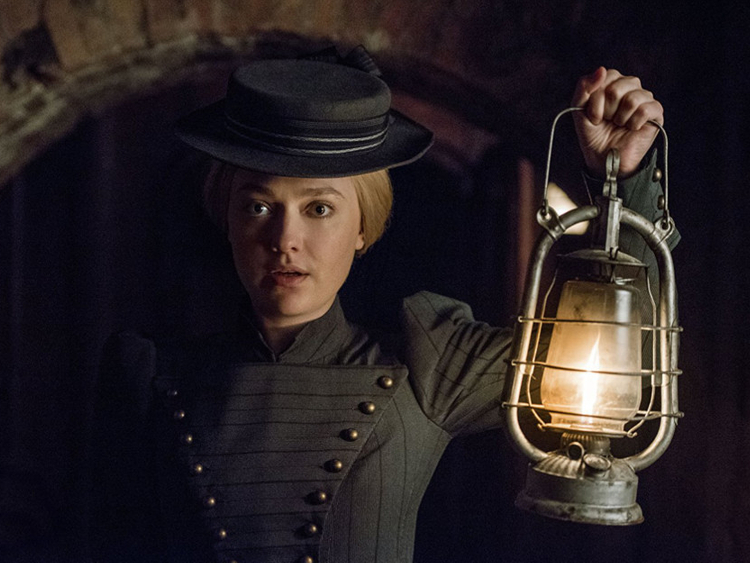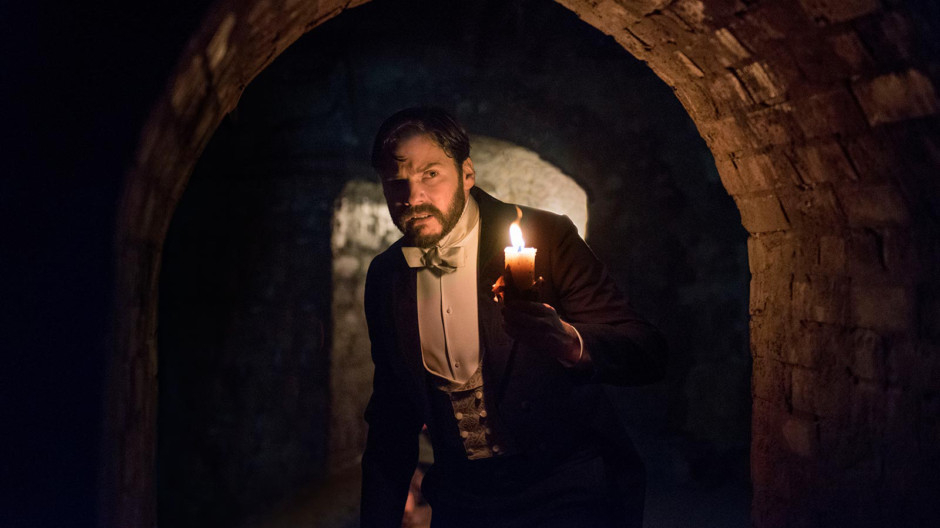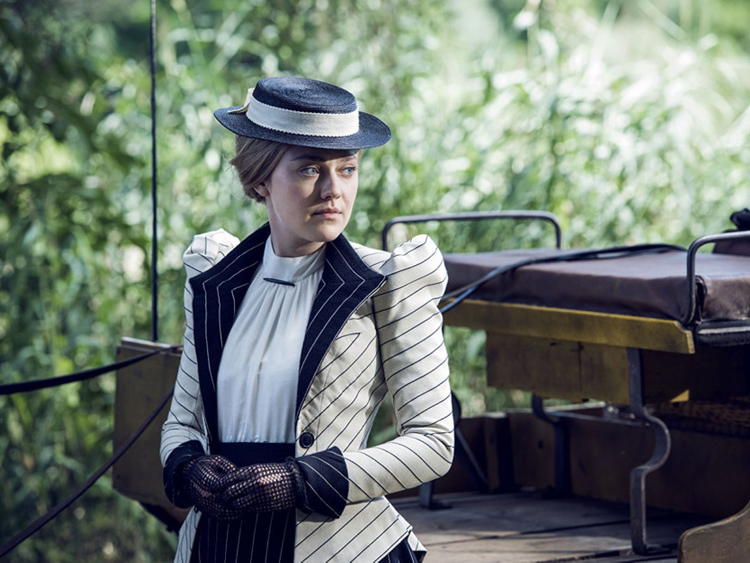
In 1896, a new bridge, connecting the Lower East Side to Williamsburg, was under construction; it would be the second to connect Manhattan with Brooklyn, then still a separate city, across the East River.
The headquarters of the city’s Police Department was adjusting to its first female employee, a stenographer named Minnie Gertrude Kelly. She was put there by the recently installed police commissioner, one of the city’s favoured sons who was a mere five years away from becoming the president of the United States.
It was the height of the Gilded Age. Robber barons were making money hand over fist, and spending it on luxurious mansions along Fifth Avenue, while downtown, dozens of people crammed into each of the tenement buildings that lined the Bowery. These are historical facts. But they are also, through the blurry lens of fiction and television, the setting for The Alienist, a 10-episode miniseries based on the 1994 novel by Caleb Carr.
Here’s a look at how The New York Times covered New York City in that era.
In the series, Laszlo Kreizler and John Moore (played by Daniel Brühl and Luke Evans) are participating in a murder investigation because of the goodwill of a college buddy who just happens to be the police commissioner: Theodore Roosevelt. Roosevelt did indeed become commissioner in 1895. He was famous by then, having served in the state Assembly, buried his first wife, Alice, and mended his broken heart out west. In April 1895, the idea that he would become the police commissioner was front page news. “He refuses to confirm or deny” rumours that he will take the position, a lead headline said on April 24: “Theodore Roosevelt, the amiable and gifted author, field sportsman, and legislator, was born in this city thirty-seven years ago. His father, Theodore, was a son of Cornelius Van Schaick Roosevelt, a millionaire merchant and brother of Robert Barnwell Roosevelt, once United States Minister to the Netherlands, publicist, and pisciculturist.” (That’s someone who runs a fish hatchery. You learn something new every day.)
“Roosevelt will probably accept,” the next day’s headline read.
Indeed he did, and for the next few weeks, his every step was chronicled. On June 8, out for a morning patrol, he caught an officer napping. By July, the department was enforcing “dry Sunday,” to end the scourge of drunkenness.
By 1897, Roosevelt had moved on from the city and its police force, taking up a post as the assistant secretary of the Navy.
Dakota Fanning plays Sara Howard, a secretary to Roosevelt who investigates the murders. The series makes much of her being a woman navigating what was until then a department that employed only men.
The first woman to work in the headquarters of the department was Minnie Gertrude Kelly. Roosevelt hired her during his first week on the job in May 1895. It was a cost-cutting move. “When I took office I found that I had two clerks, one of whom was a stenographer,” he said in a speech on May 9. “I shall be able to get along with one clerk, and he will have to be a stenographer.”
The next day, in eight short lines at the bottom of the front page, Kelly’s appointment was announced: “President Roosevelt of the Police Board has appointed Miss Vinie Gertrude Kelley of 160 East Eighty-first Street as his private secretary and stenographer. Mr. Roosevelt said he needed only one clerk, and that he had employed Miss Kelley, as he knew her to be a competent stenographer and typewriter.”
As a clerk and a stenographer, she would be paid $1,700 (Dh6,243) a year to do the work of two men who had previously earned a combined $2,900 to do the same work. (And yes, The New York Times apparently got her given name and surname wrong.)
In December, The New York Times reported on the minutes of a commissioners’ meeting, at which they discussed an unnamed “young woman stenographer” who was to fill in for a week for a regular — male — stenographer at the civil service board.
Roosevelt asked how much pay she was to get. Col. Grant said that it has been arranged for her to get $14 for the week. Mr. Andrews said Secretary Bell thought he could get a substitute for $10 a week. Mr. Roosevelt said he believed a woman should be paid as much as a man if she did the work. The other Commissioners agreed with him, and it was finally decided to pay the girl $12 a week during her temporary engagement.” (Two decades later, Isabella Goodwin would become the department’s first female detective — an occasion that commanded a full-page spread in The New York Times. Now there are more than 6,000 female officers.)
Delmonico’s has been synonymous with fine dining for nearly 200 years, a reputation built on the foundation of the original opened in 1827 by the brothers John and Peter Delmonico. Over the decades, it would move locations, and family members would join and leave the empire, but in 19th-century New York it had no parallel. In the novel, the restaurant is practically another character for all the time the detective team spends there. The Alienist tried to recreate its grandeur.
By the dawn of the 20th century, the restaurant was housed in the building on Beaver Street that still holds its name, though not its business, today. It had become a regular fixture in The New York Times. Charles Dickens visited, and The Times was there. A grand duke held forth, and The New York Times was there, on page one. The deaths of longtime staff members merited obituaries: a beloved bartender named George in 1879, and a man known as Henri the waiter, in 1904. In 1889, the restaurant was so famous that it sued a Paris restaurant that was tricking American tourists by using the name. In 1893, a shooting there made the front page.
“Five bullets fired into the restaurant by a ‘crank,’” the headline shouted. The “crank” was immediately arrested and identified as George A. Roeth: “The only explanation Roeth gave for his act was that the rich people did not treat the poor fairly, and he wanted to scare them.”
No one was hurt, though the episode made for dramatic reading. “The firing attracted a large crowd to the scene, but for a time no one interfered with the man. There was a line of carriages along the curb in front of Delmonico’s, but none of the drivers seemed anxious to take the risk of tackling the maniac.”
__
Don’t miss it!
Season one of The Alienist is currently streaming on Netflix.
















